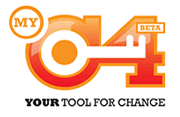![]() I just watched the recorded webcast. It’s great that Lending Club uses these to communicate to the users. However I found the way some information were presented to the lenders to be controversial. About 11 minutes into the presentation the company advertises the Annualized Default Rate of 2.36%. Looking at the slide at 0:13:29 the company states “Less than Three Loans out of the 100 Default”. Is that right – does the percentage of Annualized Default Rate figure match the percentage of loans that default?
I just watched the recorded webcast. It’s great that Lending Club uses these to communicate to the users. However I found the way some information were presented to the lenders to be controversial. About 11 minutes into the presentation the company advertises the Annualized Default Rate of 2.36%. Looking at the slide at 0:13:29 the company states “Less than Three Loans out of the 100 Default”. Is that right – does the percentage of Annualized Default Rate figure match the percentage of loans that default?
This does not match Lendingclub’s own definition of Annualized Default Rate, which is:
Annualized Default Rate is calculated by dividing the total amount of loans in default by the total amount of loans issued for more than 120 days, divided by the number of months loans in default have been outstanding and multiplied by twelve. The loans issued for less than 120 days are excluded from the calculation because loans are unlikely to default during the first 120 days.
I’ll create the following example to illustrate what Annualized Default Rate means to lenders. Imagine a bad-lucked lender that loaned 10 loans with 100 US$ each 12 months ago. First all went well, but after 10 months suddenly 5 of his borrowers failed to pay and defaulted. Colloquially that lender might swear: “That sucks, 50% of my loans defaulted”
Under the formula this gives us an annualized default rate of 8.3%. That sounds much better, doesn’t it? The important difference is that the annualized default rate figure is just a snapshot taken right now. It will rise over the time until the loans mature (if the lender does not invest in new loans). So after 36 months it will be much higher while the figure “50% of my loans defaulted” will not have changed after 36 months (if the other 5 loans continue to be paid on time).
You may want to ask, if the figure could fall instead of rise? No, for a given portfolio the annualized default rate can only go up over time – no loan can return form a default but addituionally further loans could default.
So what does that mean?
First: An annualized default rate of 2,36% does not match the message “Less than Three Loans out of the 100 Default”.
Second: Most of Lending Club’s loans are very young and the overall loan volume is growing. So even if – due to growth – the annualized default rate stays at 2,36% overall, it will rise higher for given loan portfolios orginated in the past. (Compare: ‘Lending Club Default Rates Much Higher than Initially Expected?‘).
Note that the same effects impact the Net Annualized Return rate.

 As reported in the past
As reported in the past 